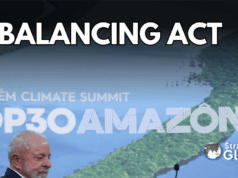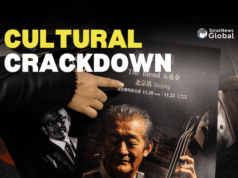It’s not every day that a large bunch of policy wonks and tech titans start their morning with a grin. But then again, not every diplomat can land a punchline quite like India’s External Affairs Minister Dr. S. Jaishankar.
“We’ve gathered to discuss the other ‘T’ word,” began Jaishankar in his address Friday at the 9th Carnegie Global Technology Summit, where the massive hall at the Oberoi hotel had standing room only.
. “If you’re a diplomat, you don’t want to be caught between technology and tariffs,” he continued as the chuckles died down. Technology and tariffs are no longer niche trade concerns. They’re now the twin terrors of global diplomacy.
With that, and in the Q&A session that followed, Jaishankar served up what was perhaps the most candid—and quietly cutting—assessment of the state of global techno-politics from any major foreign policy figure in recent memory. If tech once represented free-market optimism, it now symbolises a fracturing world order.
The “two Ts” joke wasn’t just a rhetorical warm-up. It was a frame for what Jaishankar sees as a world shifting in real time. In his view, we’re living through an unmistakable geopolitical reset—driven not just by old-school power plays, but by chips, code, and cloud contracts.
He laid out how three tectonic shifts—in the US, China, and Europe—are redrawing the map of global technology leadership. The United States, he said, has “fundamentally changed its approach to engaging the world,” particularly on tech.
This wasn’t always so clear, even during the MAGA years. But now, the connection between America’s global strategy and tech advancement is hard to miss. “Tech has a big role in making America great again,” he said, with the faintest hint of irony.
The pivot, he noted, is visible in speeches like Vice President Harris’s at the Munich Security Conference or earlier at the AI Action Summit in Paris—an under-the-radar moment that signalled a recalibration of Washington’s tech ambitions.
Then there’s China. If America’s changes feel like a sledgehammer, China’s tech advances are more like a slow flood—silent but deeply altering the landscape. The “DeepSeek” moment, a symbolic flex in AI prowess, underscores what Jaishankar calls China’s “evolution.” While trade may have captured the headlines, it’s the parallel tech surge that’s raising alarms from Silicon Valley to South Block.
The strategic tug-of-war between the US and China is clearly influencing India’s own positioning. And Jaishankar, never one for sweeping declarations, made a subtle but significant point: it’s not just a bipolar world anymore. It’s messier—and more opportunity-laden—than that.
Europe, once the master of geopolitical hedging, now finds itself stuck in a strained triangle between the US, Russia, and China. “From the best of all worlds,” Jaishankar remarked, “you can end up with the most difficult of all worlds.” He noted that even in this moment of confusion, Europe’s increasing engagement with India—like the visit of 21 European commissioners—signals a recognition that new alliances are necessary.
And technology, again, is at the heart of this shift. The India-EU conversation is no longer just about trade and investment—it’s about data governance, digital infrastructure, and supply chain resilience.
Amid this churn, Jaishankar positioned India as not just a bystander, but a shaper of the emerging order. The theme for the summit—Sambhavana (possibility)—wasn’t just poetic flair. It was a policy pitch. India, he argued, is in a unique position to offer an alternative to both American corporatism and Chinese techno-authoritarianism.
The country’s Digital Public Infrastructure (DPI)—from Aadhaar and UPI to CoWIN and DigiLocker—has become a case study in scalable, inclusive innovation. “We are giving away the source code, not the surveillance,” he joked, a sly dig at both Big Tech and Beijing.
India is also moving into previously underplayed sectors like semiconductors, drones, and private space ventures. In all this, the goal is not to turn inward but to lead by example—to show that you can be sovereign and still be open, agile, and globally relevant.
Jaishankar didn’t shy away from the tough stuff either. The fusion of technology and national security, he said, has made traditional partnerships more complex. The old idea of “hedging on everybody” to “get the best of all worlds” doesn’t work anymore.
In the AI era, questions around talent mobility, natural resource security (think rare earths), and nuclear energy are back on the table. Talent, in fact, may be the new choke point. “For us in foreign policy,” he said, “the flow of talent is today of much greater salience.”
India’s ability to attract global capability centres (GCCs), facilitate smoother visa regimes, and train domestic talent at scale could be its most undervalued geopolitical asset.
Jaishankar closed with a fresh twist on the tired data cliché. “If data is the new oil,” he said, “then who are the consumers? What is the mode of consumption? Where are the refineries? And how will the trade in this commodity work?”
It’s a fair set of questions—and India, it seems, wants to be more than just a data mine. It wants to refine, regulate, and responsibly profit from the new oil economy.
Dr. Jaishankar’s message at the summit wasn’t a chest-thumping nationalist pitch, nor a bland techno-utopian one. It was a nuanced, wry, and ultimately optimistic take on a world in flux. India, for its part, seems ready—not just to play the game, but to help redesign the board.
And if there was one message to take away from his wry “two Ts” intro, it’s this: the old rules no longer apply. Diplomats now need to understand chips and code just as much as treaties and tariffs.
In a world full of digital dogfights and algorithmic anxieties, that kind of clarity is rare. And a little refreshing.
In a career spanning three decades and counting, Ramananda (Ram to his friends) has been the foreign editor of The Telegraph, Outlook Magazine and the New Indian Express. He helped set up rediff.com’s editorial operations in San Jose and New York, helmed sify.com, and was the founder editor of India.com.
His work has featured in national and international publications like the Al Jazeera Centre for Studies, Global Times and Ashahi Shimbun. But his one constant over all these years, he says, has been the attempt to understand rising India’s place in the world.
He can rustle up a mean salad, his oil-less pepper chicken is to die for, and all it takes is some beer and rhythm and blues to rock his soul.
Talk to him about foreign and strategic affairs, media, South Asia, China, and of course India.





